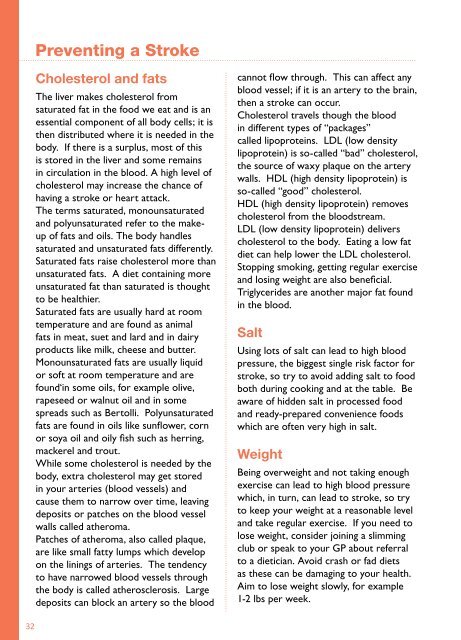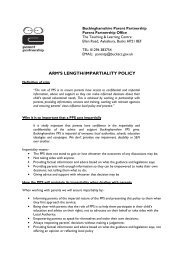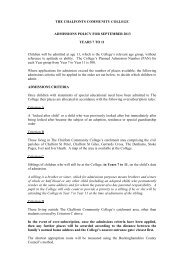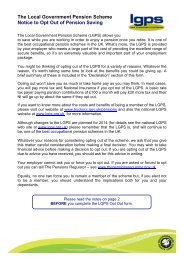Stroke Patient Portfolio (PDF) - Buckinghamshire County Council
Stroke Patient Portfolio (PDF) - Buckinghamshire County Council
Stroke Patient Portfolio (PDF) - Buckinghamshire County Council
Create successful ePaper yourself
Turn your PDF publications into a flip-book with our unique Google optimized e-Paper software.
Preventing a <strong>Stroke</strong> The liver makes cholesterol fromsaturated fat in the food we eat and is anessential component of all body cells; it isthen distributed where it is needed in thebody. If there is a surplus, most of thisis stored in the liver and some remainsin circulation in the blood. A high level ofcholesterol may increase the chance ofhaving a stroke or heart attack.The terms saturated, monounsaturatedand polyunsaturated refer to the makeupof fats and oils. The body handlessaturated and unsaturated fats differently.Saturated fats raise cholesterol more thanunsaturated fats. A diet containing moreunsaturated fat than saturated is thoughtto be healthier.Saturated fats are usually hard at roomtemperature and are found as animalfats in meat, suet and lard and in dairyproducts like milk, cheese and butter.Monounsaturated fats are usually liquidor soft at room temperature and arefound‘in some oils, for example olive,rapeseed or walnut oil and in somespreads such as Bertolli. Polyunsaturatedfats are found in oils like sunflower, cornor soya oil and oily fish such as herring,mackerel and trout.While some cholesterol is needed by thebody, extra cholesterol may get storedin your arteries (blood vessels) andcause them to narrow over time, leavingdeposits or patches on the blood vesselwalls called atheroma.Patches of atheroma, also called plaque,are like small fatty lumps which developon the linings of arteries. The tendencyto have narrowed blood vessels throughthe body is called atherosclerosis. Largedeposits can block an artery so the bloodcannot flow through. This can affect anyblood vessel; if it is an artery to the brain,then a stroke can occur.Cholesterol travels though the bloodin different types of “packages”called lipoproteins. LDL (low densitylipoprotein) is so-called “bad” cholesterol,the source of waxy plaque on the arterywalls. HDL (high density lipoprotein) isso-called “good” cholesterol.HDL (high density lipoprotein) removescholesterol from the bloodstream.LDL (low density lipoprotein) deliverscholesterol to the body. Eating a low fatdiet can help lower the LDL cholesterol.Stopping smoking, getting regular exerciseand losing weight are also beneficial.Triglycerides are another major fat foundin the blood.Using lots of salt can lead to high bloodpressure, the biggest single risk factor forstroke, so try to avoid adding salt to foodboth during cooking and at the table. Beaware of hidden salt in processed foodand ready-prepared convenience foodswhich are often very high in salt.Being overweight and not taking enoughexercise can lead to high blood pressurewhich, in turn, can lead to stroke, so tryto keep your weight at a reasonable leveland take regular exercise. If you need tolose weight, consider joining a slimmingclub or speak to your GP about referralto a dietician. Avoid crash or fad dietsas these can be damaging to your health.Aim to lose weight slowly, for example1-2 lbs per week.32
















